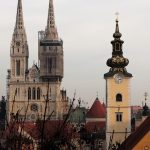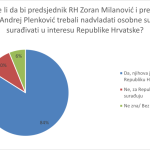All the way from Asia, to the oldest native Croatian town on the shores of the sea – Šibenik.
The media loves to run constant bleak stories about the mass exodus of people from Croatia heading off to Western European countries in search of better wages, more security and more opportunities to further their careers of choice. It isn’t that these stories are exaggerated, Croatia does indeed find itself in a less than favourable position economically, with expert sources claiming that the country learned absolutely nothing from the crisis from which it emerged only a few years ago. While these depressing tales may not be over-exaggerated, they are perhaps somewhat oversaturated.
Despite the media headlines, many a foreigner comes to Croatia, and while life isn’t easy and the bare bones of Croatia’s rather grim reality hiding just underneath its pretty face might come as a shock to most, there are more and more people who come here and with persistence and an ever-adapting thick skin, manage to make it work. These people aren’t just other Europeans who come from countries with systems that are similar in some way or another and therefore find it a little easier to adapt, but from countries much, much further afield than our continent.
As SibenikIN writes on the 24th of November, 2018, one 26-year-old woman all the way from the Philippines has decided to make no less than the historic Dalmatian city of Šibenik home.
”Šibenik’s sunset is the most beautiful in the world!” stated the woman who switched the Philippines for the Dalmatian coast.
“When I first came here, it was morning. Silence. And I thought: Oh my God, this is the city I want to live in!” said Elovelle Liego in conversation with HRT/Sanja Jurisic.
Elovelle stated that her desire to live in Europe was finally realised as she began working in a hotel in the very heart of Šibenik, where she remained working after the summer as a chef, writes HRT.
“I make strudel and Šibenik cake (Šibenska torta), I can cook pašticada and salsa,” added Elovelle. When it comes to work and wages, otherwise two of the things most are unhappy with, aside from politics of course, she says she is more than happy, and she loves her fellow citizens of Šibenik.
“They’re very good, kind-hearted, they pass by here and greet me everyday,” she said, adding that she’s gradually learning the Croatian language. While Elovelle is full of praise for Šibenik’s friendly locals, the feeling is very much mutual towards her.
“They have some inborn sense of hospitality, they’re really approachable, hard working,” said Fabiano Baranović from Hotel King Krešimir in Šibenik, when speaking about Filipino workers. It also seems that Elovelle won’t be the only Filipino working in Šibenik in about one year’s time.
“I think there could be a couple more, just to make sure we avoid problems in tourism,” Baranović added.
And one of those key problems is a lack of workforce, with many people taking advantage of their freedom of movement across the European Union, Croatia has been left not only with a demographic crisis, but with one of its most bitter symptoms – nobody to do any work. In the area of Šibenik-Knin County alone, as many as 500 work permits for foreigners were requested this past summer.
Make sure to keep up with our lifestyle page for more. Thinking about making the move to Croatia yourself? Get acquainted with the country’s residence system here.








